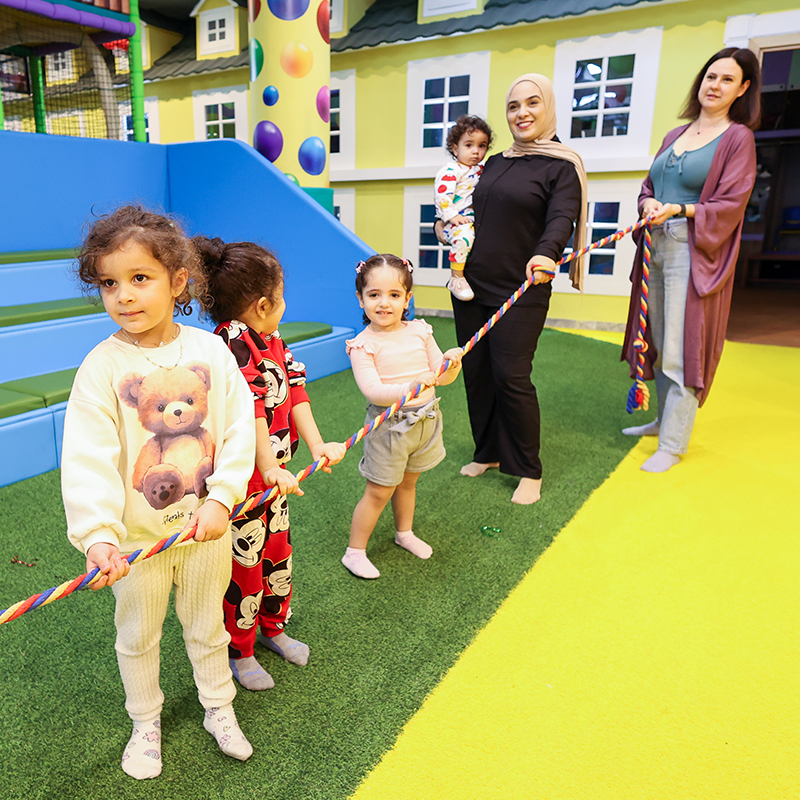Childhood is silently being pulled indoors not for play, but for screens. You can see it in stiff shoulders, tired eyes, and short attention spans. Movement, laughter, and real social contact are shrinking. Indoor playgrounds are stepping in as one of the few spaces that bring back what healthy childhood is supposed to look like active bodies, thinking minds, confident behavior, and real interaction in a safe and controlled place. They are not just entertainment anymore; they are becoming an essential part of raising healthy children.
They Keep Kids Physically Active Without Effort
Exercise for children cannot depend on motivation. Kids need environments that make movement automatic. Indoor playgrounds do exactly that. Climbing structures, rope elements, high steps, tunnels, and jumping stations force the body to move in natural ways building balance, stamina, agility, and core strength. Because the play is structured and safe, children can push themselves without fear or weather interruption. These micro-workouts build healthy habits early and reduce future health risks.
They Train the Brain While the Body Moves
Indoor play does more than burn energy it builds thinking skills. Every route, obstacle, rule, and challenge requires planning, adjustment, trial and error, and decision-making. Children learn to read situations, correct mistakes, and try again. This type of active thinking improves problem-solving, creativity, memory, and cognitive flexibility skills linked to better academic performance and stronger mental resilience.
They Shape Behavior and Social Intelligence
Healthy living is not only about the body, it is also about how a child interacts with others. Indoor playgrounds create controlled situations where kids must communicate, compromise, wait, share, lead, and resolve friction without adult mediation. These real-time interactions train empathy, confidence, patience, and emotional control. Children who practice social behavior through play often adjust better in school and group environments.
They Build Emotional Strength Through Controlled Risk
Children grow emotionally when they face challenges that feel real but are safe. Indoor playgrounds offer “safe difficulty” heights, balance points, unfamiliar zones, and timed games. When a child completes a task after a failed attempt, the nervous system learns how to handle stress, disappointment, retrying, and success. This builds internal resilience, not through lectures but through lived experience.
They Stimulate the Senses and Strengthen Processing
Healthy development depends on how well the brain processes information from the senses. Indoor playgrounds activate multiple senses at once texture under hands, height changes under feet, changing sound levels, visual complexity, and movement speed. Regular exposure improves sensory integration, which supports writing, reading, coordination, and focus in classroom settings.
They Improve Attention and Focus Without Screens
Certain indoor activities require children to follow rules, remember steps, and stay mentally engaged for minutes at a time. Board games, timed puzzle zones, and navigation challenges train focus and discipline. Children get used to paying attention without digital stimulation, which supports better school performance and less restlessness.
They Support Language and Imagination Naturally
When children talk, plan, pretend, and act out ideas during play, language develops without force. Role-play areas and open-ended play zones encourage storytelling, vocabulary expansion, expressive speech, and listening. Imagination is not “extra it is tied to emotional and intellectual growth. Indoor play gives children a real space to build it.
They Offer Reliable Play Without Weather or Safety Concerns
Healthy living depends on consistency. Outdoor plans fail when it is too hot, too cold, unsafe, or late. Indoor playgrounds make active play possible any day, any season, without conditions. For many families, they are the only guaranteed way to ensure children move and socialize regularly. This reliability is one of the reasons parents keep returning to the best indoor play area for kids, not as a treat, but as part of family routine.
A Closing Thought
If we are serious about raising healthy children, we cannot keep depending on luck good weather, free parks, safe streets, or a child’s own desire to move. Indoor playgrounds remove those excuses and build a lifestyle where physical, mental, social, and emotional health are trained together through play. That is why they are not a passing trend. They are a structural answer to a modern problem and a quiet rescue of real childhood before it disappears.




Comments are closed